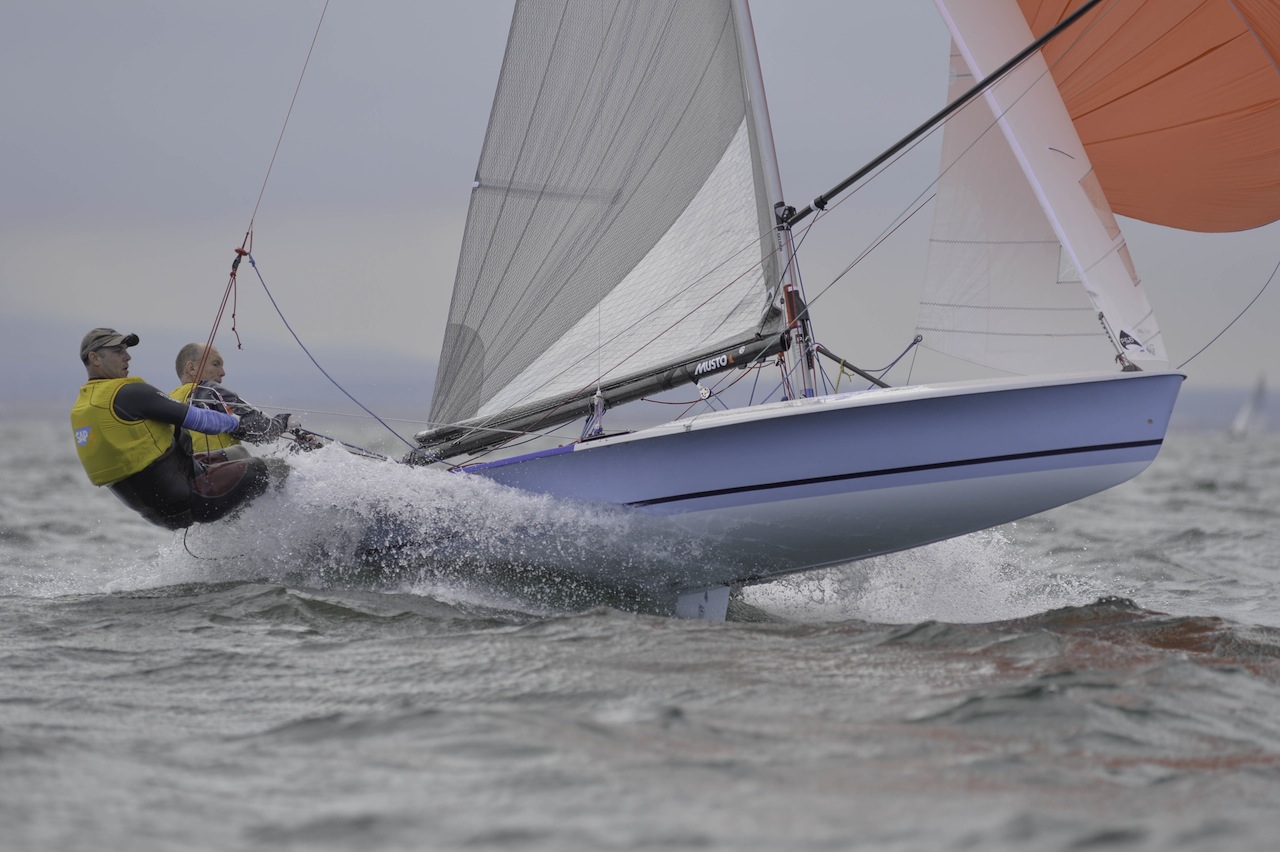

I interviewed Mike Holt about how to start well every time starting, Mike is a three-time World champion in the high-performance International 505 when he was in Adelaide Australia competing in our 505 National championships.
Mike has competed in a huge number of 505 events all around the world, he is by no means a one-class sailor. Mike has sailed 49ers, Melges 24, Mumm 36. Offshore he has competed in the Transpac a number of times aboard Merlin, a ULDB 68 owned by Bill Lee out of Santa Cruz on the west coast of the USA.
Starting well is one of the skills that will give you the greatest single advantage in any race if your boat is set up correctly and on the pace.
Mike, can you describe your overall starting strategy in the 505 race? Now I understand we have gate starts, and you do a lot of line starts, as well? How do you start well every time?
Mike: Yes, for a gate start, obviously we try to check out what we see going on, whether it has more pressure, where there are any currents, and so forth. Then before we would start, we would have an overall game plan. Whether going left or right, generally, play the shifts and note what the forecast is.
Is the forecast is tending left, or tending right or just oscillating. So the plan is not finalised until we’ve got a big picture and what we feel the plan is for the conditions.
And then, with a gate start in particular whether we start early or late, with a line start you might pick an end of the line, left end, right end.
With a gate start, you don’t have that choice. You really have a choice of starting early or starting late.
So we’ll be watching the wind, and we have a fairly straightforward technique. Somewhere around a minute before we start, we will sheet in at the start mark, go upwind, and see how the numbers compare to what we have seen.
It was interesting listening to you and Rob talking about the tide and current and how it influenced your start strategy.
Mike: Well, we dropped a water bottle, we three-quarter filled it up with water, so it floated fairly low, threw in at the gate mark. Then watched which way it was drifting for a minute. It went two boat lengths in that minute, so that’s a pretty strong tide.
With a 10-minute beat, that’s two boat lengths every minute on the upwind leg, that’s 20 boat lengths.
So what are the most common ways competitors get into trouble on the start line? Comparing gate to line starts, how do you start well every time?
Mike: To me, the stress is very similar. I think you want to make sure that you’re controlling your destiny. And I think you quickly see boats that are, and boats that aren’t.
Selfishly, I’m looking for victims. I’m looking for people who are in the wrong position. When I’m, in those last seconds leading up to the start, and then you’re getting that space.
I’ve created space for myself while taking them out of the picture, and then when the boat comes through, they get flushed. I’ve got a clear lane. So I’m looking for a fast exit so I’ve got room to leeward I can control the path.
What do you see as the crew’s role in the start sequence? What happens on your boat for instance?
Mike: So I think our division of labour is such that I’m positioning the boat. We talk about where we want to be, and then I’ve gotta get the boat in that place.
I’m then saying, “Speed on, speed off. Get forward or not.” And you do the big call in the boat because we’re racing. Which means, full speed up the race track.
So we called that today. Twenty seconds before we started we knew we were in trouble, and we were trying to get back to the line.
One of the problems a lot of other people have is holding their lane once they get off the line. What do you do to hold your lane?
Mike:
- Before you start the race, you need to make sure the boat is set up and that you’re competitive.
- If you’re happy that the boat is set up and you’re competitive, the key thing is to make sure you got your lane. If you don’t have a lane, you’re going to get flushed.
- Even the very fastest boats, can’t hold a lane, if they’re being squeezed, they’re going to get out of it. There’s no way out of that so make sure the boat is set up well and that you’re confident.
I think we all recognize when the boat is going well, and we’re high, and we’re not…as long you’re talking. If you’ve got runway under you, as a helmsman, you can see that position.
- What you can’t see is what’s happening behind you. So the crew’s job, once we’ve started, is to give me the information. Primarily about the boats above, but also to tell me if we’re going high or low, slow or fast.
If I get a high fast, coming from the crew, things are fantastic. That means we’re doing great.
When I get a high slow, my next thought is, is the boat above the problem?
We talk about that and if we’re low but the speed is okay, I’ve got to work to get the height back up. So based on what I’m getting, I’m adjusting what I’m doing.
- The key is to keep sailing the boat fast. If you miss a couple of waves, you don’t put enough out on the mainsail or back in, you’ll have lost that runway.
- The first minute and two minutes are everything. Because once you’re out the back it’s compounded really fast, really fast.
When I watch the racing, I wonder why boats that are getting flushed, aren’t doing something about it.
As soon as you’re getting flushed, you want to tack. You need to find yourself a new piece of real estate to go sailing.
- Sailing in bad air is the ticket to a long day.
That brings me to the next question. What do you do to recover if you get balked or get a far from a satisfactory start? How do you start well every time?
Mike: Which we did today.
As soon as we crossed the line, we tacked and followed the pathfinder out. But our game plan, was to go right anyway so we still executed the plan we had.
That certainly worked today, going out to the right but you had already thought about the current?
Mike: Because we were stuck behind the pathfinder, and he was going very high. When you’re in bad air, you can’t match height so I just put the bow down and sailed low and fast.
If you’re in that and you are looking for your next opportunity. So you get a header, and you can get set back up into a better position, take that.
If you’re convinced you’re going the right way, push on.
So when you’re looking up the course prior to the start, you’ve worked out what the tide was going to be today, and what was the current. What else do you look for? It’s patchy out there at the moment, and this morning, but it dropped off pretty quickly. What did you look for up the course?
Mike: So first we look at the geography, in Adelaide, there are hills to our south here. And it goes flatter this way. So we figured that the wind would be steadier to the left, shiftier to the right.
I also thought that there was potentially more wind on the left because the hills slowed it down.
We also thought that was going to create a bend along the shore because the wind coming up the shore is going to try to parallel the shore.
We figured that chances were there would be a starboard lift coming to the mark.
Ultimately there was less current on the shore, and we would more than likely get a starboard lift coming in. So that was our reason to go that way.



